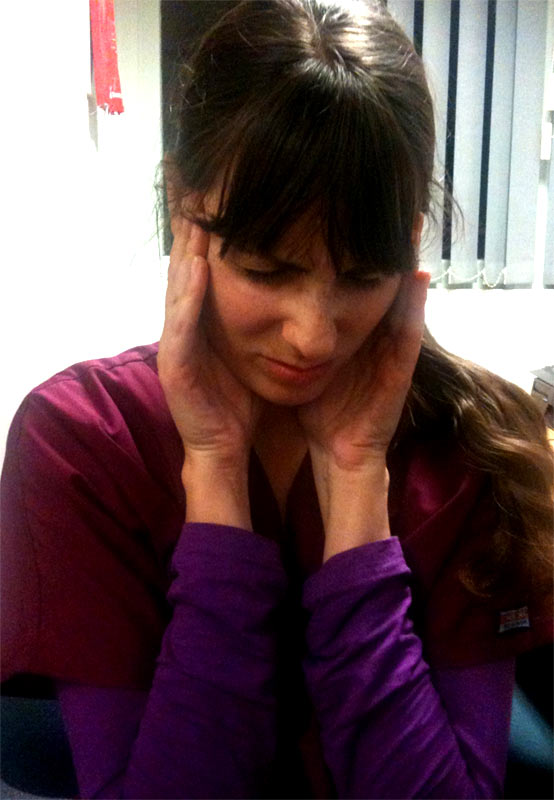 | « Back to article | Print this article |
Why rice is good for your health
A round up of all the health news that matters to you
Researchers have shown that consumers can improve their diets simply by enjoying white or brown rice as part of their daily meals.
In a study, lead author Theresa Nicklas, DrPH, of Baylor College of Medicine, analysed the National Health and Nutrition Examination Survey datasets from 2005-2010 and evaluated the association of rice consumption with overall diet quality and key nutrient intakes in a nationally representative sample of 14,386 US adults.
Nicklas said their results show that adults who eat rice had diets more consistent with what is recommended in the US Dietary Guidelines, and they showed higher amounts of potassium, magnesium, iron, folate and fibre while eating less saturated fat and added sugars.
She said that eating rice is also associated with eating more servings of fruit, vegetables, meat and beans.
In addition to the positive results in cross-sectional studies linking rice consumption with healthier diets, a human clinical trial found that having white or brown rice at a meal increased satiety and feelings of fullness more than a calorically equivalent glucose solution control.
Considering the cross-sectional and clinical findings, both enriched white rice and whole grain brown rice should be recommended as part of a healthy diet.
The study has been published online in the journal Food and Nutrition Sciences.
Kindly click NEXT to read more
Low-calorie restaurant menus may be making us unhealthier
A new study suggests that restaurants that now provide “low-calorie” labels on their menus can inadvertently cause people to eliminate healthy food right off the bat.
“Because most restaurant menus are quite complex -- offering numerous dishes composed of multiple ingredients -- diners try to simplify their decision. People have come to expect low-calorie food to taste bad or not fill them up,” authors Jeffrey R. Parker (Georgia State University) and Donald R. Lehmann (Columbia University) wrote.
“We propose that by calorie organising a menu, restaurants make it easier for people to use the general ‘low-calorie’ label to dismiss all low-calorie options early in the decision process,” they wrote.
In four online studies, the authors asked participants to order food from menus similar to what they might encounter at well-known chain restaurants. Some participants were shown traditional menus that listed available dishes in food-type categories (with no calorie information on the menu).
Another set of participants was given the same menus, but with calorie information provided by each dish. A third group was given the calorie-labelled menus with the low-calorie dishes grouped together and given a low-calorie section label.
Study results showed that the participants who were given the traditional menus without any calorie information and the menus with the low-calorie food grouped together ordered food with similar amounts of calories. Interestingly, the participants who ordered from the calorie-labelled (but not grouped) menus ordered meals with fewer calories overall.
The study is published in the Journal of Consumer Research.
Kindly click NEXT to read more
Severe sleep apnoea could up risk of stroke, cancer and death
Researchers have linked moderate to severe obstructive sleep apnoea to an increased risk of stroke, cancer and death.
Results of the 20-year follow-up study show that people with moderate to severe obstructive sleep apnoea were four times more likely to die (hazard ratio = 4.2), nearly four times more likely to have a stroke (HR = 3.7), three times more likely to die from cancer (HR = 3.4), and 2.5 times more likely to develop cancer.
Lead author Nathaniel S. Marshall, PhD, senior lecturer in clinical trials at the University of Sydney in Australia, said sleep apnoea is a common disease that has a powerful impact on public health because it greatly increases the risk of strokes, cancers and mortality from any cause.
The study involved 397 adults who are participating in the ongoing Busselton Health Study.
Objective sleep data were gathered in 1990 using a portable home sleep testing device.
Participants with a history of stroke or cancer were excluded from selected analyses.
Prevalence rates were 4.6 percent for moderate to severe OSA and 20.6 percent for mild OSA. During the 20-year follow-up period there were 77 deaths and 31 strokes, as well as 125 cancer events that included 39 fatalities. Mild sleep apnea was not associated with increased health risks.
The study has been published in the Journal of Clinical Sleep Medicine.
Kindly click NEXT to read more
Girls' mental health suffers when romances play out differently than they imagined
Researchers have revealed that adolescent girls’ risk of severe depression, thoughts of suicide, and suicide attempt increase after their relationships unfold differently than what they imagined.
The study used data on more than 5,300 high school students from the National Longitudinal Study of Adolescent Health and examined the mental health consequences of mismatches between adolescents’ ideal and actual relationships.
In the initial interview, researchers provided adolescents with a number of cards describing events that often occur within relationships, including everything from hand holding and kissing to sex, Study author Brian Soller, an assistant professor of sociology and a senior fellow of the Robert Wood Johnson Foundation Center for Health Policy at the University of New Mexico said. Respondents kept cards describing events they would engage in within an ideal relationship, and then indicated the order in which the events would occur.
Roughly a year later, the respondents repeated the exercise, only this time they indicated which events took place within their relationship, and then provided the order in which the events transpired. During both interviews, researchers asked participants about their mental health.
As for why relationship inauthenticity increased the risk of mental health problems for girls, but not for boys, Soller said, “Romantic relationships are particularly important components of girls’ identities and are, therefore, strongly related to how they feel about themselves -- good or bad. As a result, relationships that diverge from what girls envision for themselves are especially damaging to their emotional well-being.”
On the other hand, Soller said relationships are not as important to boys’ identities.
The study has been published in the Journal of Health and Social Behavior.
Kindly click NEXT to read more
How food texture affects our calorie intake
A new study suggests that the way we chew and eat our food impact our overall consumption.
According to the study, people perceive food that are either hard or have a rough texture to have fewer calories.
“We studied the link between how a food feels in your mouth and the amount we eat, the types of food we choose, and how many calories we think we are consuming,” authors Dipayan Biswas, Courtney Szocs (both University of South Florida), Aradhna Krishna (University of Michigan), and Donald R. Lehmann (Columbia University) wrote.
In five laboratory studies, the researchers asked participants to sample foods that were hard, soft, rough, or smooth and then measured calorie estimations for the food. In one study, participants were asked to watch and evaluate a series of television ads.
While watching the ads, cups filled with bite-sized brownie bits were provided to the participants as tokens of appreciation for their time. Half of the participants were not asked anything about the brownies and the other half were asked a question about the calorie content of the brownies. Within each of these two groups, half of the participants received brownie bits that were soft and the other half received brownie bits that were hard.
When the participants were not made to focus on the calorie content, they consumed a higher volume of brownies when they were soft (vs. hard). In contrast, when made to focus on the calorie content, the participants consumed a higher volume of brownies when they were hard (vs. soft).
Brands interested in promoting the health benefits of their products can emphasize texture, as well as drawing attention to low-calorie foods.
“Understanding how the texture of food can influence calorie perceptions, food choice, and consumption amount can help nudge consumers towards making healthier choices,” the authors added.
The study is published in the Journal of Consumer Research.




